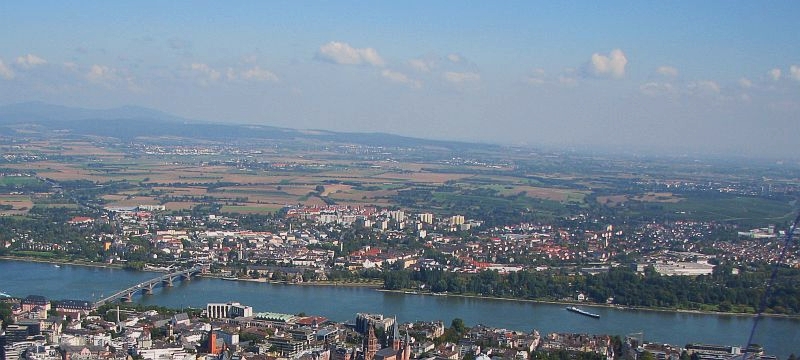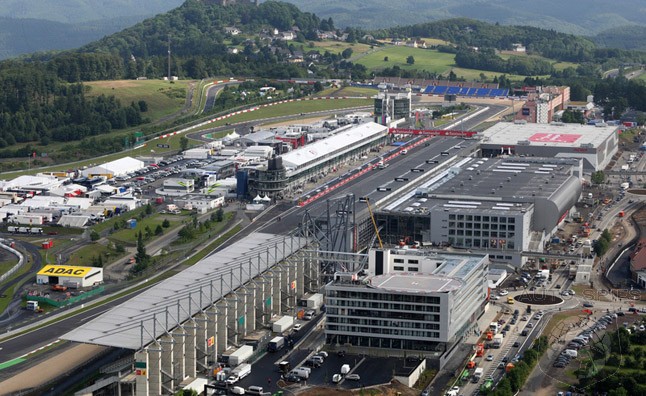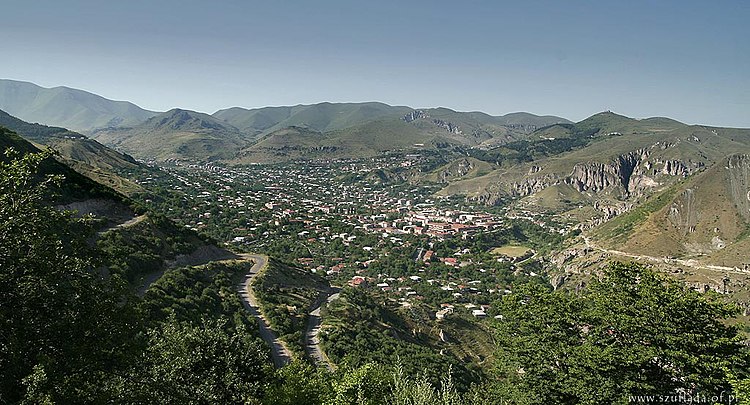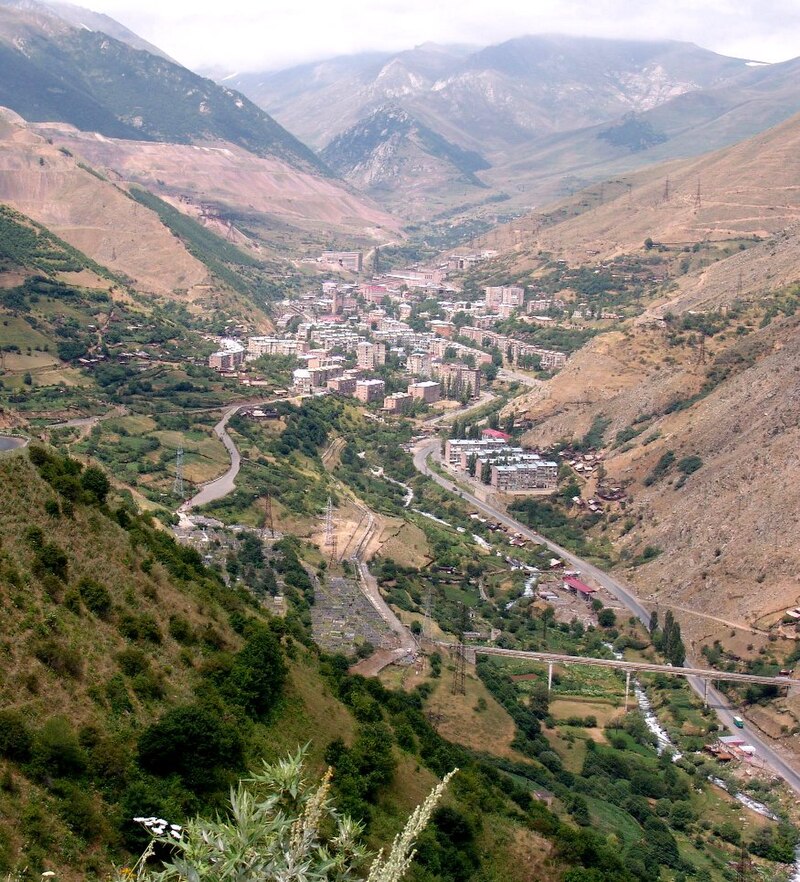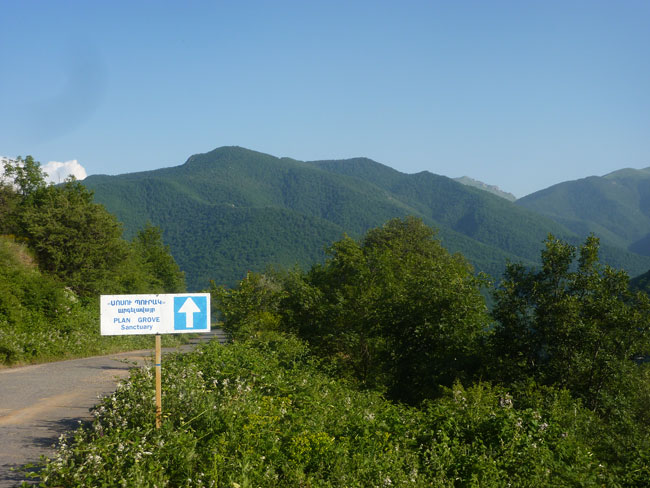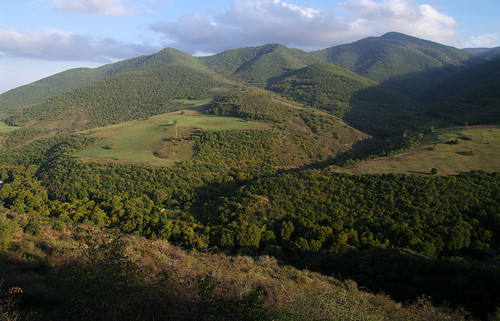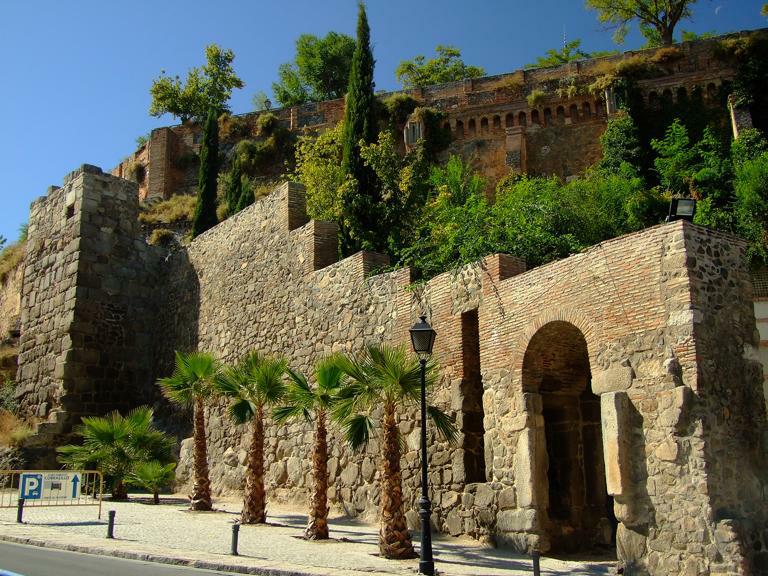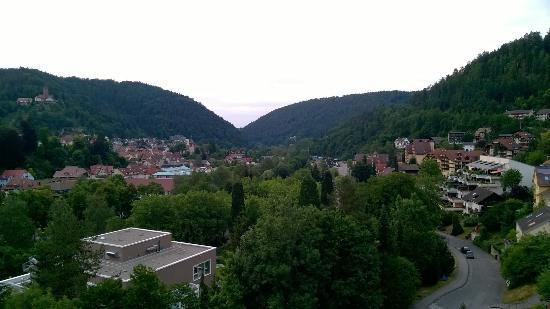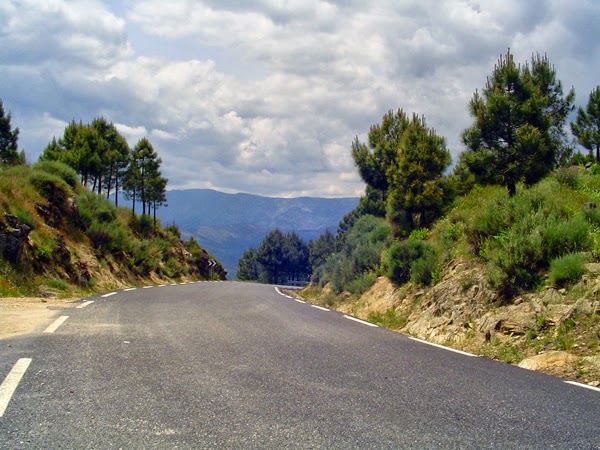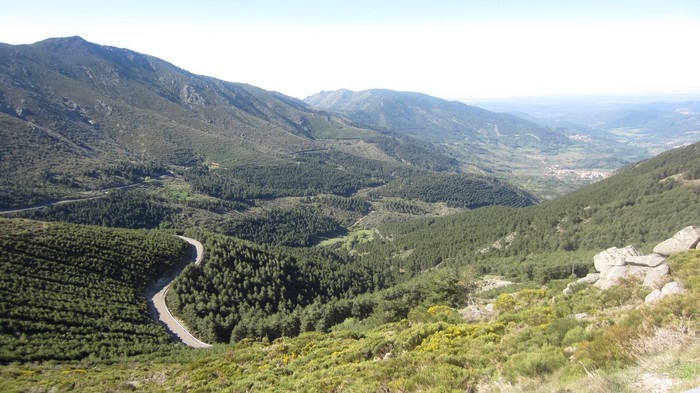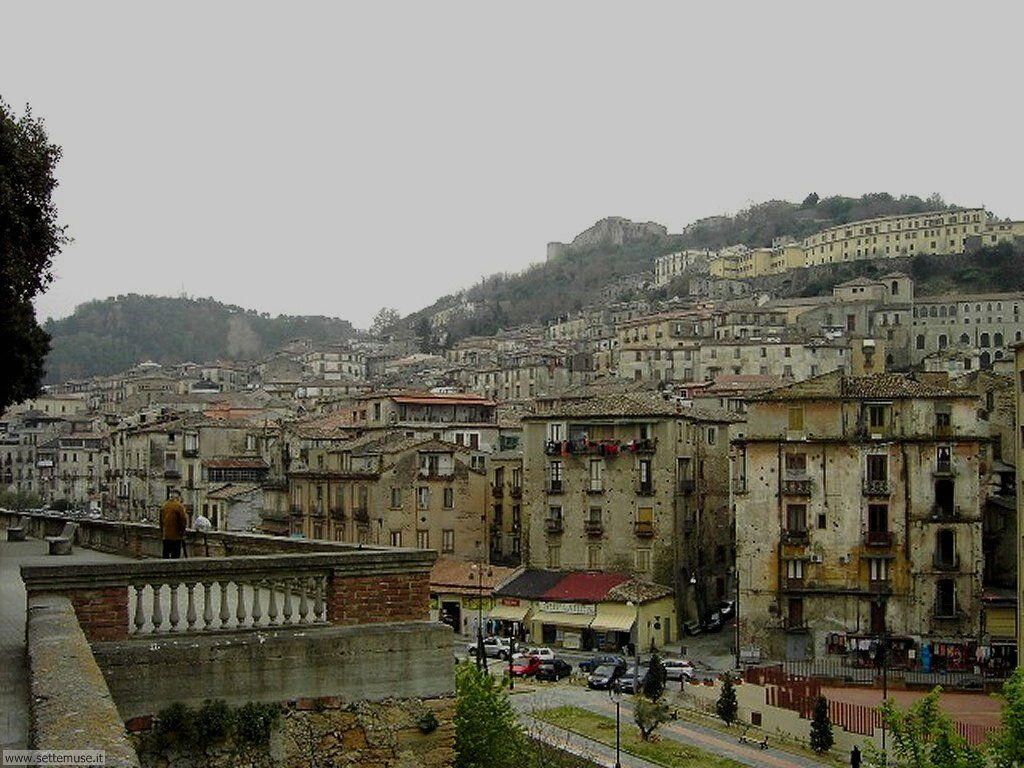1.1: GP Sierra de Ávila - Memorial José María Jiménez
As I mentioned during my Vuelta, and also when I presented my
Circuit d'Olot-Memorial Xavier Tondó one day race in Catalunya, I've always thought it a little sad that Marco Pantani and Frank Vandenbroucke both got memorial races, whether a brand new race (Memorial Marco Pantani) or an appropriation of an existing/resurrecting of an appropriately-located race (Binche-Tournai-Binche, now Binche-Chimay-Binche/Memorial Frank Vandenbroucke), while Spain's own iconic cycling tragedy, José María Jiménez, has not had the same bestowed upon him, even though Chava died earlier and younger than the other two.
In terms of racing style, Chava was cut from the same never-say-die cloth as Marco and Frank; searing through the 90s with a racing agenda based primarily on aggressive climbing and paying no heed to subsequent days' consequences. As a result, he was capable of the most imposing, destructive mountaintop victories... and also losing all of the time gained in seemingly innocuous places. There was also another thing that held Jiménez back from accruing a stronger palmarès: he was one of the true pure climbers. Tall but wispy, he would float up the steepest of slopes, but his chrono was diabolical. As an example, he lost thirteen minutes in the two long time trials in the 1999 Vuelta, and finished at +9'24" in 5th. Although it was not his best race, much like Frank Vandenbroucke it is something in that 1999 Vuelta that he is most well-known for. VDB may have won Liège-Bastogne-Liège, Omloop, Gent-Wevelgem and Paris-Nice, but the moment most often brought up in his veneration is the amazing Ávila stage where he towed and destroyed some pretty big name climbers in an intermediate stage. Likewise, Chava's 1999 Vuelta is far from his crowning moment, however that year he wrote himself into Vuelta legend once and for all, when in some pretty horrible weather (but nothing on 2002) he became the first man to triumph on the brutal slopes of the Angliru,
which you can relive here as he chases down and defeats the escape of Pavel Tonkov at the last minute. Try to remember in watching that, the climb was brand new at that point, and the Giro hadn't unveiled Zoncolan or Finestre... this only had the Mortirolo to compare to.
Jiménez had been a good prospect, winning the Circuito Montañés in 1992 and with two wins in the difficult mountain Classic the Subida a Urkiola, paired with San Sebastián and finishing on one of País Vasco's nastiest and most heralded climbs (known as the Grand Cathedral of Basque cycling) in the mid-90s, he was developing a name as a mountain specialist. After working his tail off as a domestique for Miguel Indurain, he was allowed a bit of development time of his own. Coming 12th in the 1996 Vuelta, he stepped to the forefront towards the end of the 90s. He made the top 10 of the 1997 Tour de France, albeit over half an hour back from the unstoppable '97-vintage Ulle (the same man he'd be within 10 minutes of despite 13 mins of time trial losses two years later), in service of Olano, and then gave birth to the Chava of legend with a blistering late attack to win
a tough stage into Los Ángeles de San Rafaél over Navacerrada and the Alto del León in the King of the Mountains jersey; although had he not led the competition, he would have been able to do it in the national champion's jersey he had won a few months earlier on a hilly course in Melilla (thus proving that
Abarcá making sucky national champion's jerseys is nothing new...).
1998 was Jiménez's year. Winning a key mountain stage in the Vuelta a Asturias marked his form out, and winning atop Mont Ventoux in the Dauphiné showed he was a force to be reckoned with in the mountains, and though he entered the race as a nominal superdomestique for Abraham Olano, his blistering climbing form led to a splintering of the team; Chava would deadweight others' attacks and take the lead on two occasions, the second from his team leader with just a couple of stages remaining (though he - of course - lost out massively in the ensuing time trial). He took four stage wins, all key mountains. First was
Xorret del Catí - another of those super-steep brutes - then came back to back wins in
Vallnord Sector Pal and
Cerler, before winning the only time the Vuelta has ever finished at
Lagunas de Neila.
The strong field in the 1999 race and some issues with form pacing meant Chava was less potent, only taking the one stage win, though consistent top 5 positions on all mountain stages meant he scored his third straight GPM. 2000 was a less successful year, though he continued his quest to become the undisputed king of Andorra, taking the final two stages of the Volta a Catalunya on mountaintops in the country (Els Cortals and La Rabassa) to take the overall GC, adding to prior wins in Pal ('98 Vuelta) and won the Classique des Alpes. Some strong performances in the Tour were tempered by some abysmal stages, and he left the Vuelta early. In 2001, the mythical climber was back, winning another GPM at the Vuelta along with three stages - once more all mountaintops, two of which were in Andorra (
Vallnord Sector Pal once more, and the MTT to Arcalis), and also the steep closing climb of
Alto Cruz de la Demanda in La Rioja. It was his last stage win of his career, and secured the mountains classification once more, a fitting way for him to sign off.
And then, he was gone. Jiménez had always had problems with depression, and later in his career these became more and more pronounced. He retired from cycling early in 2002, and got married, but his life without cycling was no less troubled than his life with it; if anything, the time away from the bike exacerbated things. It is widely accepted that he rather fell into the wrong circles; heavy drinking and drug intake paid its price, as with the other stars of the era taken young. Chava lived out his final days in a psychiatric hospital, before succumbing to a heart attack at the age of 32. One of cycling's last tragedies, and one of the last true mythical climbers, had crested the final summit.
While the
Memorial Marco Pantani and
Memorial Frank Vandenbroucke have routes that try to honour their iconic namesakes, they are both hamstrung by location. The first winner of the race named for Pantani was Daniele Bennati, and it has also been won by Elia Viviani, Enrico Rossi, Sonny Colbrelli and Roberto Ferrari. The Memorial Frank Vandenbroucke has been a little more successful in honouring the attacking soul of VDB, but the first three editions were all won in sprints. However, the terrain around El Barraco is better suited to a race honouring the great mythical climber, so hopefully this will not be a concern.
El Barraco is a small town to be hosting such a race, but a) it's larger than Priego, which used to hold the Trofeo Luís Ocaña after the great rider's suicide in 1994; and b) it's the home of the Fundación Deportivo Victor Sastre, which supports cycling development all over the Sierra de Ávila and is run by the father of the great Carlos Sastre of course. Sastre's wife is the sister of José María Jiménez, and the great 80s climber Ángel Arroyo also came through the system in the town - he is in fact a cousin of Chava's. It is a town with far more cycling heritage and history than you might expect of a town so small; a Spanish Palù di Giovo. C) the town's cycling club is called the Club Deportivo José María Jiménez "El Chava", which also organizes a memorial group ride to the town's fallen hero much as Olot/Sant Joan des Fonts has the Marxa 100x100 Tondó.
The actual course I've put to this race does a complicated looping over itself; it first descends from the higher plains of Ávila to the lower plains of the southern part of the province, around Arenas de San Pedro. The first challenge is the long and gradual north face of
Puerto de Serranillos. This takes us to the mountain's foot town of Arenas de San Pedro, via a short climb of La Parra.
From here, the climbs will get progressively more influential on the outcome. First up is one of the contenders for hardest climb of the day,
Puerto de La Centenera, which has a much steeper final five kilometres that will need to be ridden at a hard pace to try to rid some of the weaker teams of helpers. It is followed immediately by the final few kilometres of
Pedro Bernardo (we join the road where it has the junction to Puerto del Pico) before a long and technical descent.
The all important climb is Mijáres, which I alluded to in my Vuelta route where it was the first climb of the day on the penultimate day. It's a long but comparatively uncomplicated ascent; averaging around 5% most of the way. It crests with 48km remaining but it should be where the first real action takes place as, due to its length, it should be a battle of attrition.
This gives way to an equally soaring and scenic descent, which then catapults us uphill once more into the steepest climb of the day, the short and nasty Puerto del Aguilones. This includes a couple of steep kilometres late on and should therefore create some opportunities for attacking, given that it crests 27km from home. The climb is the same as the first 4,5km of this profile (until the junction for Burgohondo):
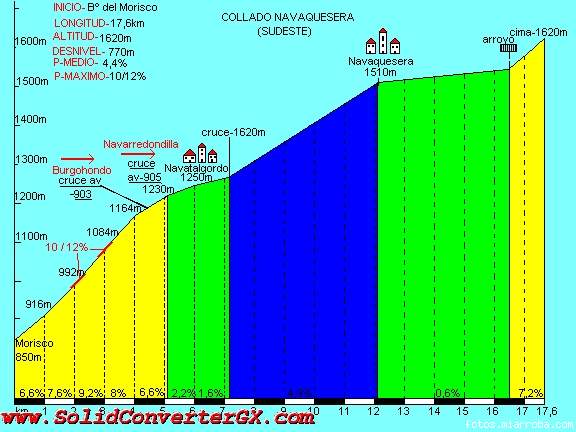
Aguilones also ought to be the most important point in the route; it is the focal point of the actual extant Memorial José María Jiménez, the everyman ride, and is a favoured training climb for riders in the area. It also enables us to remember that as a pure climber, Chava was able to match and beat the best on all types of climbs, from the gradual, drawn out ascents like Arcalis to the steep beasts like Anglirú; from long climbs to the short sharp bursts like Xorret del Catí. Finally, the last climb of the day is a comparatively easy one, the more gradual ascent into San Juan de la Nava, the next town over from El Barraco and thereby finishing just 5km from home. This ascent includes a couple of kilometres steep enough to create separation, but realistically riders without at least some kind of kick will have needed to go earlier than this to create the gaps they need as much of the climb is quite gradual.

The last 5km are a fast downhill false flat into El Barraco, before a slight - but not so much as to be more than just perceptible save for a couple of nastier ramps - rise in the last 900m which take us to our finishing line, by the Memorial monument built in honour of El Chava. The final kilometre of
this profile is the same final kilometre as we are climbing. The
monument itself serves as the finish, and was designed by Chava's brother Juan Carlos; an identical monument has been erected in Ávila. Hopefully the kind of riders we'll be seeing home will honour what José María Jiménez brought to cycling: mercurial talent, stylish and attractive riding, great climbing ability and a flair for attacking.
Rest in peace, Chava. The cycling world needs people like you.
 , which would have made a great combination. But with MTF before and after, I would have had to rethink the entire stretch in the Alps had the finish been at Les2Alpes.
, which would have made a great combination. But with MTF before and after, I would have had to rethink the entire stretch in the Alps had the finish been at Les2Alpes. ? I thought at least you would give me props for stage 9.
? I thought at least you would give me props for stage 9.




